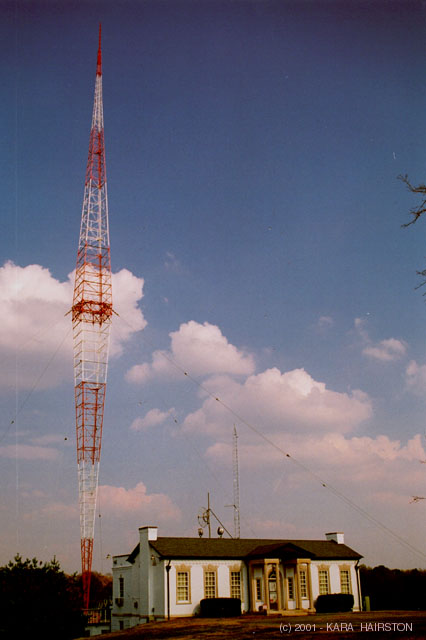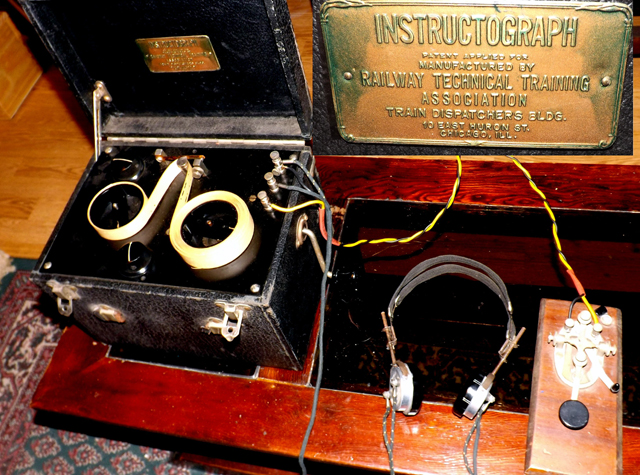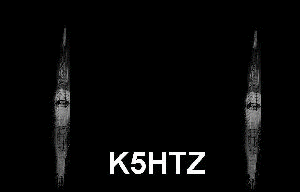
| MUSEUM OF YESTERDAY |


Radio Related Links |
from OTR.net |
TELEGRAPH OFFICE
ANTIQUE TELEGRAPH COLLECTION
 |
Today, most television and radio information is sent in Digital format. Sending of digital signals in the broadcast industry began with the satellite era. Modern TV and radio stations only switched to broadcasting in digital format a few years ago. If someone were to ask you when the use of "digital" communications began, what year would you guess? Perhaps the year Sputnik was launched into orbit, or would it have been the year when the first world-wide television transmission was made? If your guess falls along these lines, then you are totally wrong! Digital communications began with the use of the telegraph in the mid 1800s. You see, Samuel Morse's "on-off" electrical impulses that form the dots and dashes of his alphabetical code, are in fact the world's first truly "digital" transmissions of intelligent information. Digital information is made up of '1s' and '0s'. A one indicates data is present, and zero indicates a pause between that data. The number of 1s and 0s in a string, equates to the facsimile data that forms our television and radio and computer program information. Morse Code uses that same principle, although on a simple scale, to do exactly the same thing, so in fact Samuel Morse discovered digital communications long before any of us were even alive. |
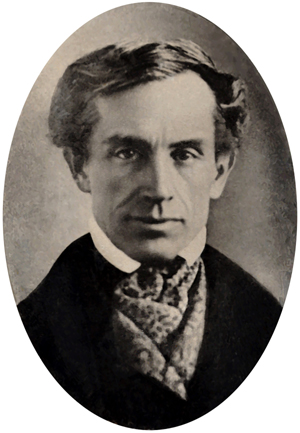

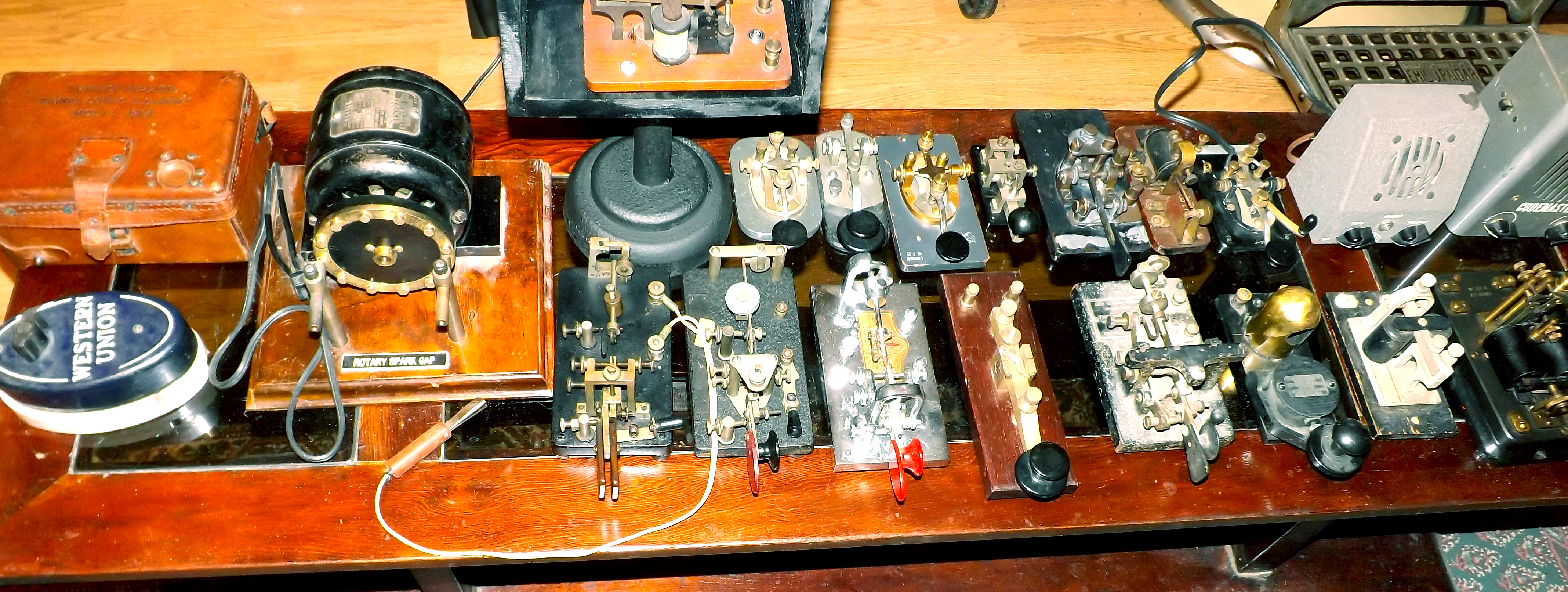
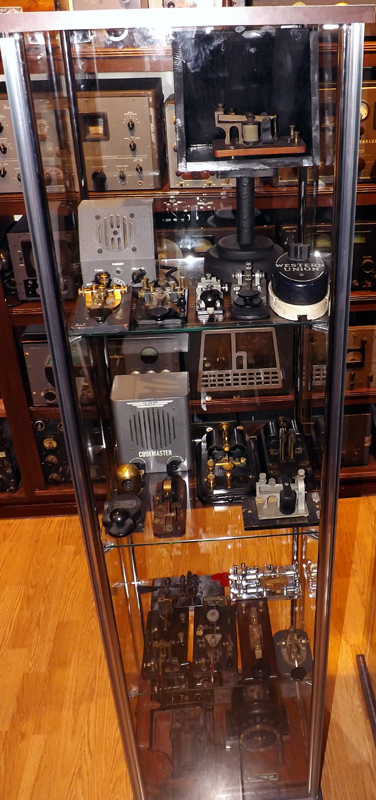
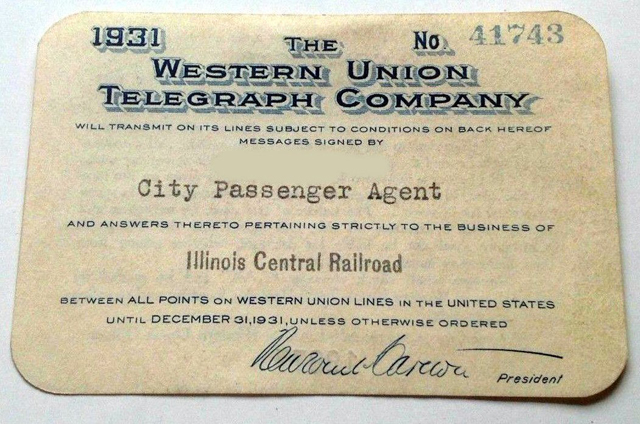
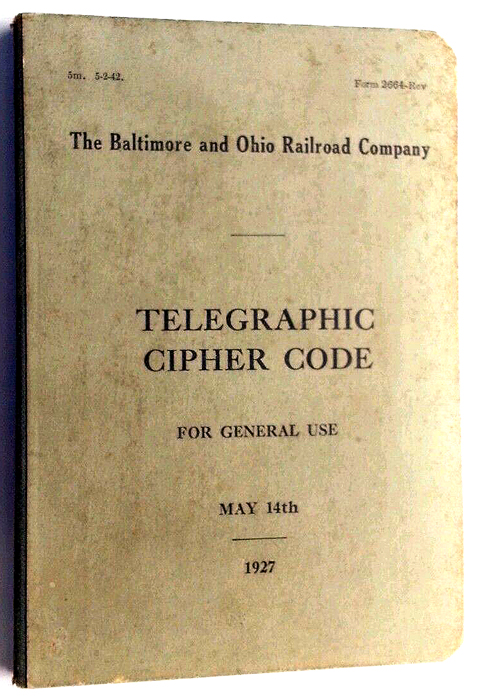
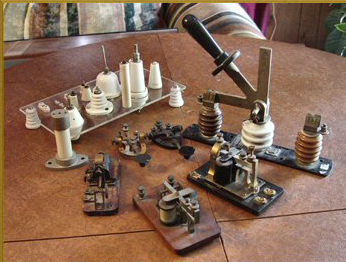
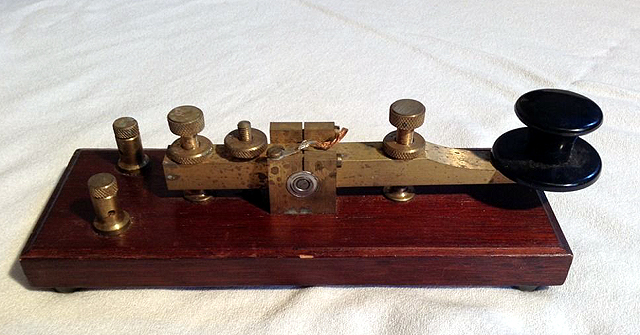
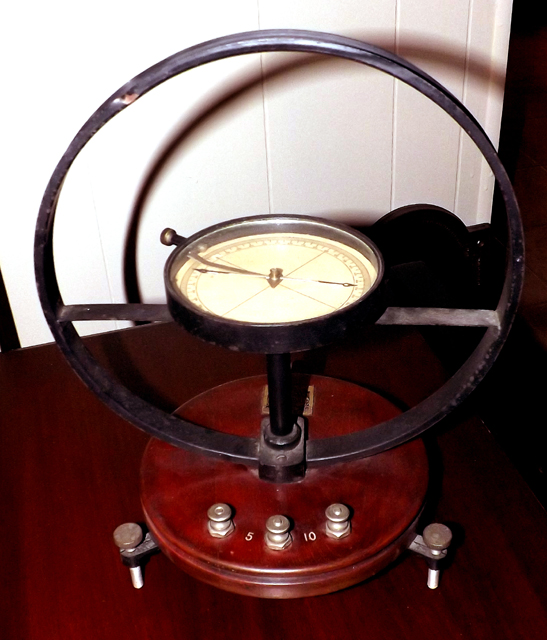
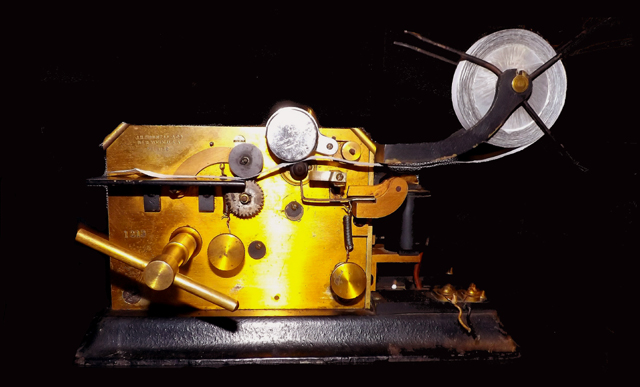
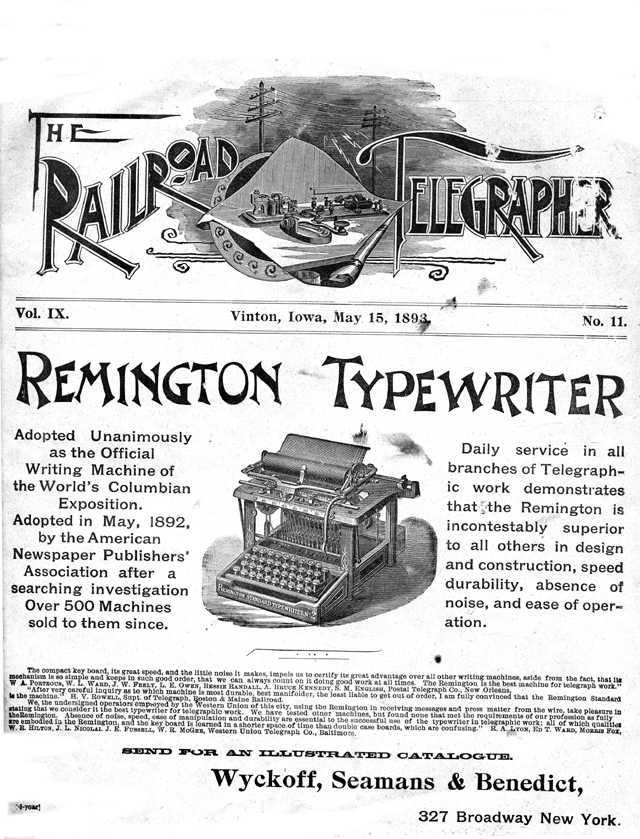
From the early 1930s through World War II and beyond, the Instructograph was widely used to train telegraph operators in both the military and private sectors. These machines used punched paper tape to control a tone generator which produced code characters for students to practice translating.
Click the image above to see a complete manufacturer's manual on the Instructograph.
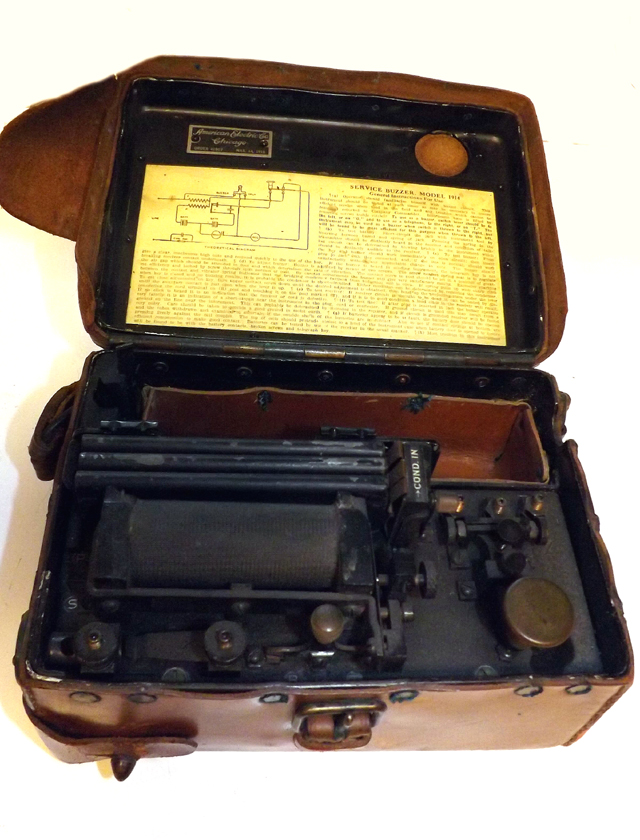
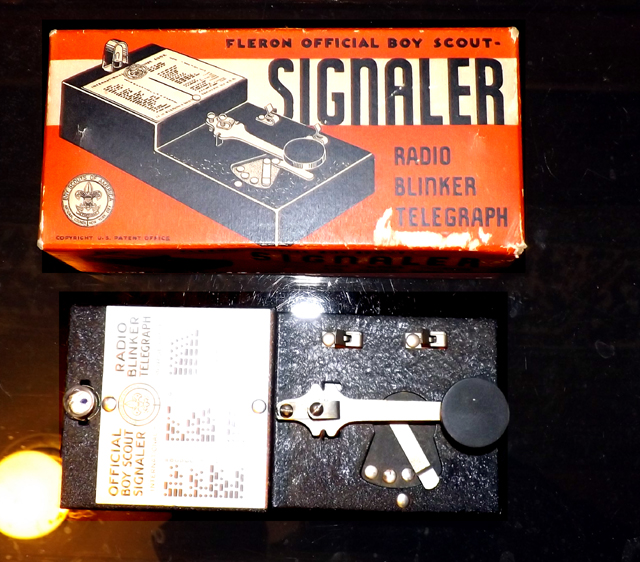
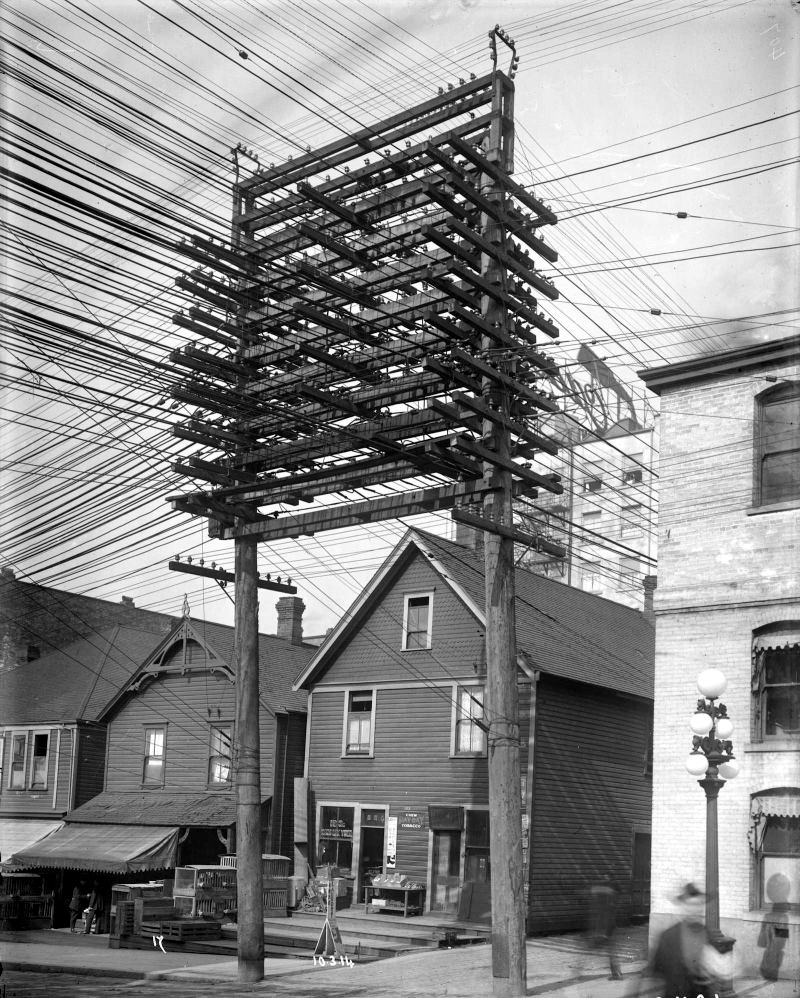
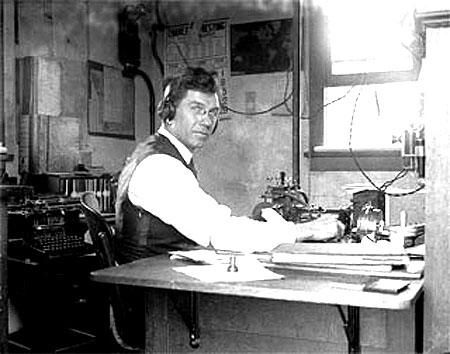
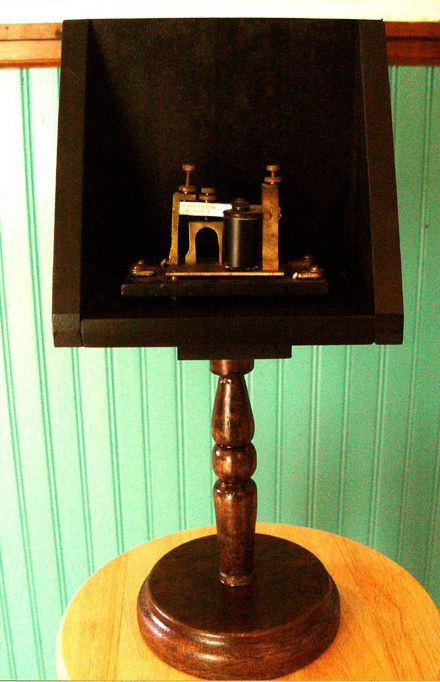
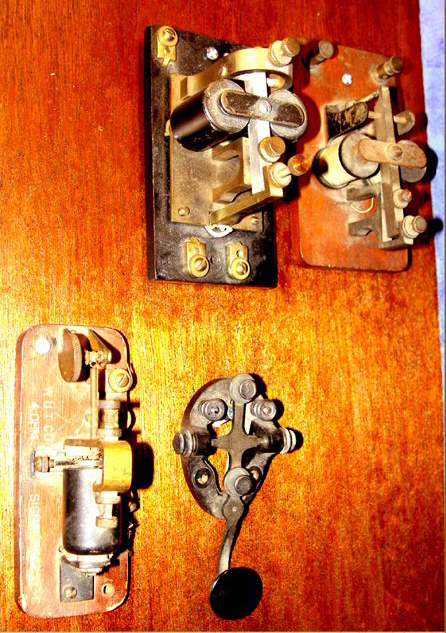
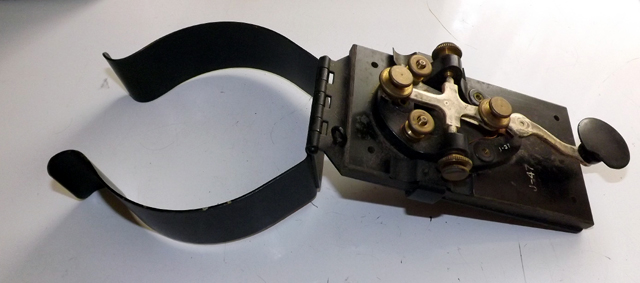

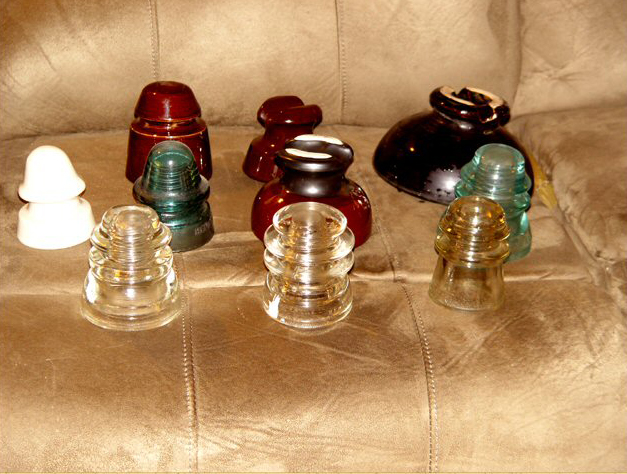
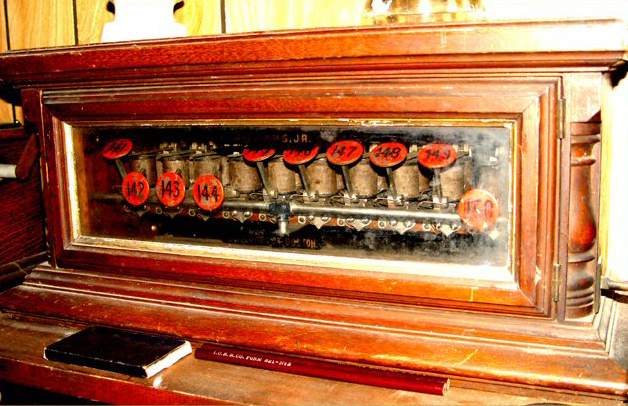
1920's selective telegraph annunciator used by American District Telegraph Company
By the early 20th Century, telegraph had become sophisticated to the point that many routine functions had been automated. The invention of the Telephone, followed by the wide availability of telephone service in most areas, sealed the eventual fate of wired telegraph service, however, telegraph technology continued to be employed in the security industry, as a method of remotely monitoring homes and buildings for the occurrence of fire or burglary. Telegraph companies, such as Western Union, also continued to send and receive messages, through the use of wired telegraphy, well into the 20th Century.
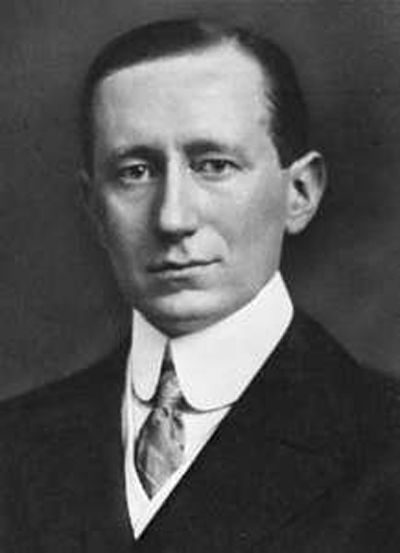
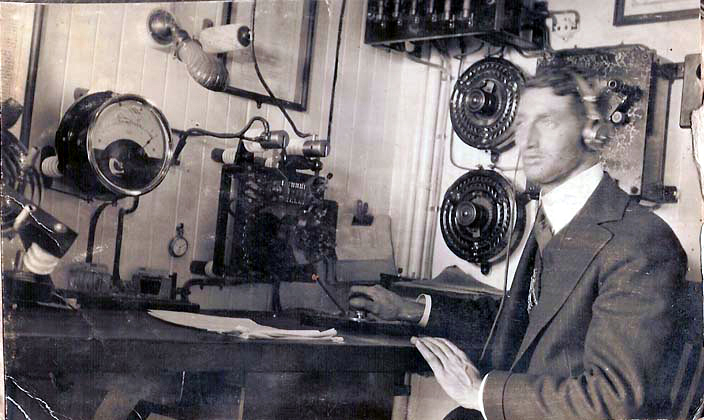
The early 1900s photo above illustrates a typical spark type radio transmitting plant on an ocean going vessel.
In the years surrounding the turn of the 19th / 20th Centuries, it had been discovered that the electrical impulses from an open electrical spark, would carry through the air. Scientists realized that this would somehow make it possible to send telegraph signals between two physical locations without the use of wires.
Commercial interests such as the Marconi Company, and amateur experimenters as well, began to employ and expand this new technological discovery, and before long, wireless telegraph transmitting stations started coming into existence. Early stations did not have the luxury of the use of the yet to be perfected Vacuum Tube, so the technology involved mostly high voltage producing transformers and generators, along with inductive tuning circuits to attempt to limit the frequency range of the spark produced signal. This gave rise to such devices as the rotary spark gap, a motor driven wheel on which numerous spark gaps were placed around the circumference of a wheel. Reception, which required rectification of the spark produced radio frequencies, was limited first to coherer type detecting devices, and later to detectors made of galena crystal.
By the early 1920s, and with the perfection of the Deforest Audion, vacuum tubes had come on the scene. Spark generation of radio signals was soon replaced by vacuum tube generated radio frequency signals, which could be tuned much more specifically to a particular frequency and bandwidth. Tubes also made it possible to amplify and rectify signals, with tuned accuracy, which eliminated the need for the earlier crystal type detectors. Wireless telegraph, however, remained in use in commercial shipping and long distance communications for most of the 20th Century. The ability of Carrier Wave code type signaling to penetrate long distances via radio, made it an ideal way to communicate with ships at sea, and stations separated by many miles, oceans and continents. It was not until the wide-spread use of cellular telephone and satellite based communications, that the need for wireless transmission of carrier wave signals came to a practical end.
Shown below are some relics of the "Spark Era" of radio's history, that are housed in the museum collection.
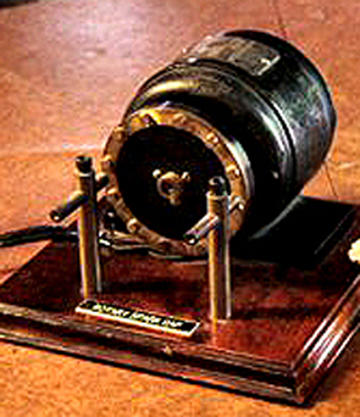
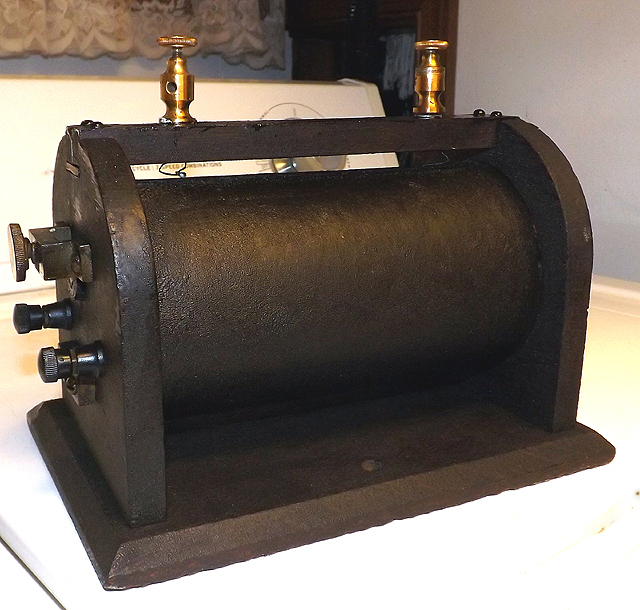
Marconi Spark Transformer from very early 1900s.
As spark generated radio communications became popular with non-commercial experimenters, early "radiotricians" began to acquire devices used to build low power transmitting stations for their personal use. Although the Marconi Company had most of the commercial and shipping radio business already, they began to license and manufacture equipment for use in these experimental low power stations. What began as basement and garage experimenting, became the early evolution of amateur or HAM radio. The device shown above is labeled as having been manufactured by USA Marconi Company, and was likely to have been sold as part of an early experimenter's transmitting station.

Above, an authentic 1905 Spark transmitter using a Tesla type induction transformer. This transmitter was an experimental amateur radio project that came from the estate of an early amateur radio operator.
Below: A replica of a 1/2 Kilowatt Marconi era transmitter that is used as a demonstration piece for tours at the museum. It is constructed with original components, and is symbolic of the type of high-energy spark transmitters used in the ship-to-shore CW stations toward the end of the "Spark" radio era.
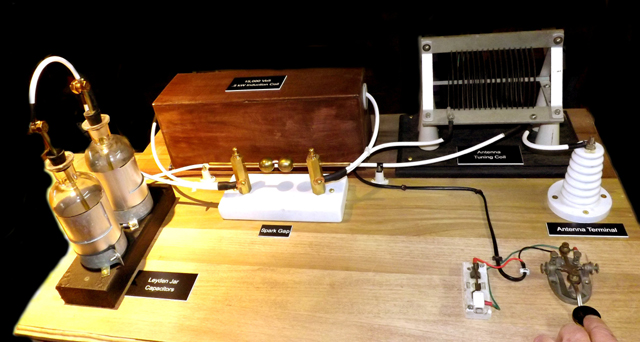
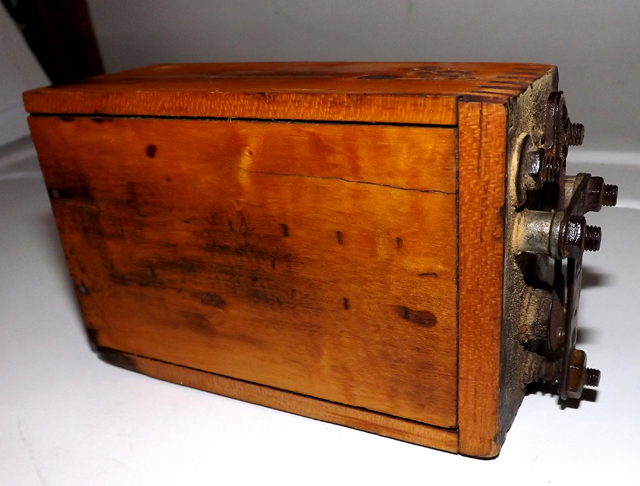
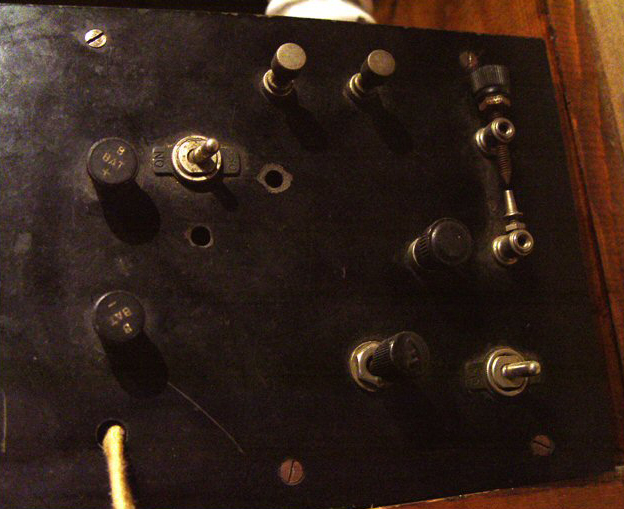

A BELL SYSTEM TELETYPE MACHINE FROM THE MID-20th CENTURY
As the telegraph and telephone systems developed into a world-wide network, it soon became apparent that data would have to move at speeds greater than what could be handled by conventional Western Union code operators. The first resulting development was the "facsimile" or Teletype machine. These devices could take in variations of binary code, similar to the on and off characters of Morse's code system, and convert that information to printed paper with conventional letters and numerals, much as a typewriter would. The Teletype soon became the method of high speed communications on the Western Union network, with machines in places like newspaper news rooms, radio stations, telegraph offices and police and fire stations. Today, computer terminals have replaced mechanical teletype machines in most applications.
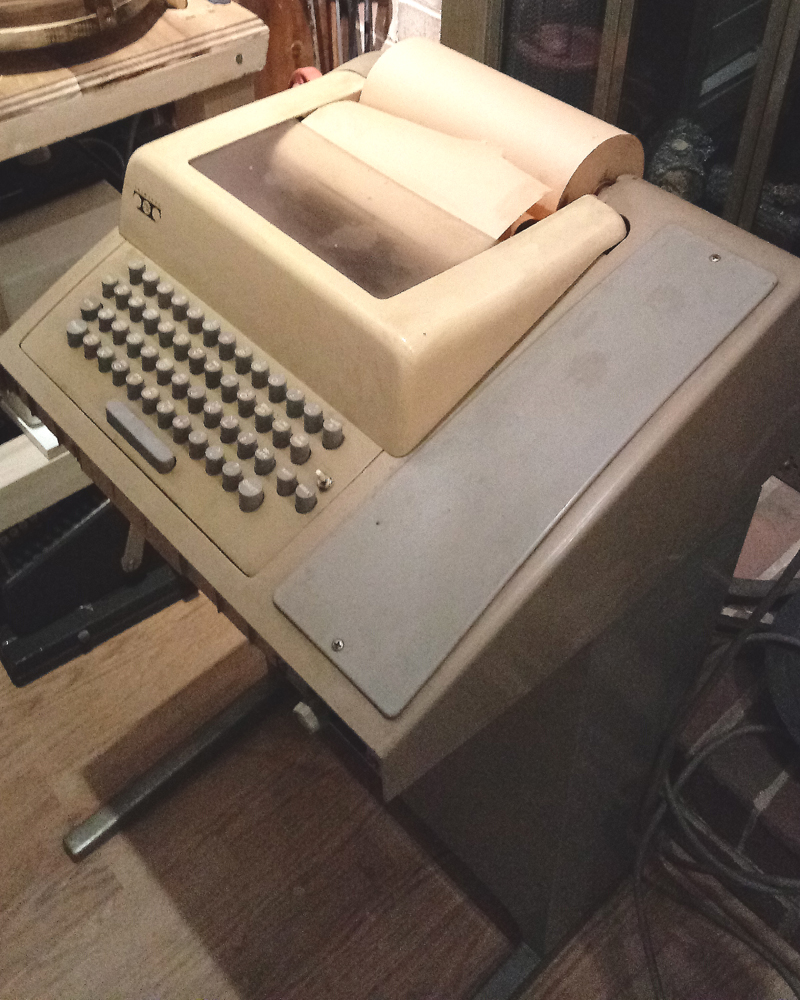
A later version of the Teletype terminal
COMMERCIAL RADIO BROADCASTING COMES OF AGE
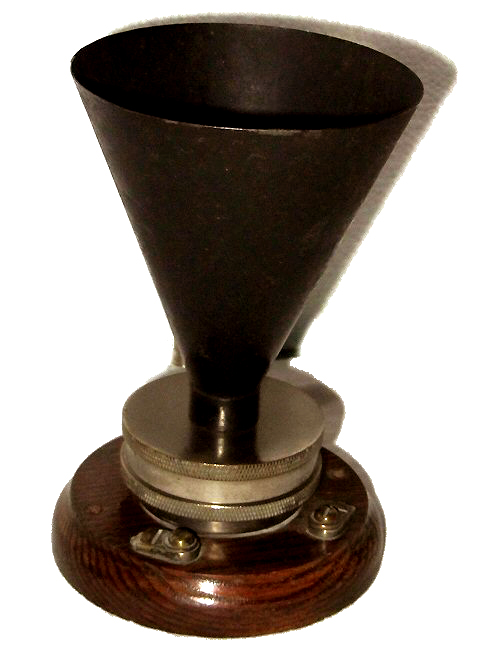
The museum's extremely rare Alexander Graham Bell design telephone voice transmitter
With the discovery of Lee Deforest's vacuum tube, Marconi's experiments in radio wave propagation, and Alexander Graham Bell's discovery of the microphone, the device that could turn sound waves into electrical signals, the field was ripe for the development of commercial voice and music radio broadcasting. In the following galleries, you will see how the inventions of several scientists and inventors all came together to give us the ability to broadcast voice and music over the air waves.
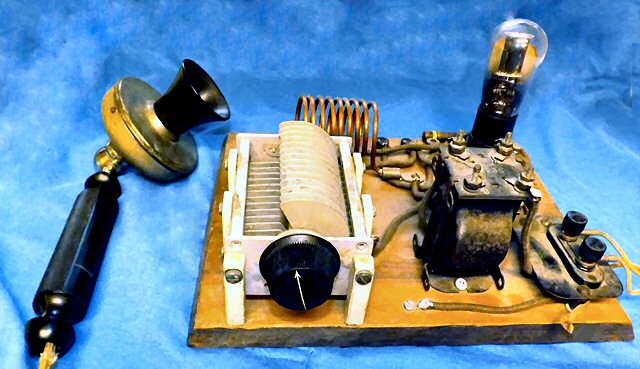
 |
Ok, now that I have shown you the transmitting station components of early wireless radio-telegraphy, we move on to the next gallery where you will see the story of the creation of the telephone. We will visit that gallery first before we move on to the gallery of early radio receivers because it is important to understand some basic telephone technology since it played a large role in the development of early radio broadcasting. Alexander Graham Bell's invention of wired voice transmitting technology was important at this step in the development of radio also. Many of Bell's audio processing principles carried over into the Radio sector, including the microphone, the earphone (which eventually evolved into the loud speaker,) and also the eventual nation-wide wired network that, along with telephone communications, also made possible the radio networks such as NBC, CBS and others. |


